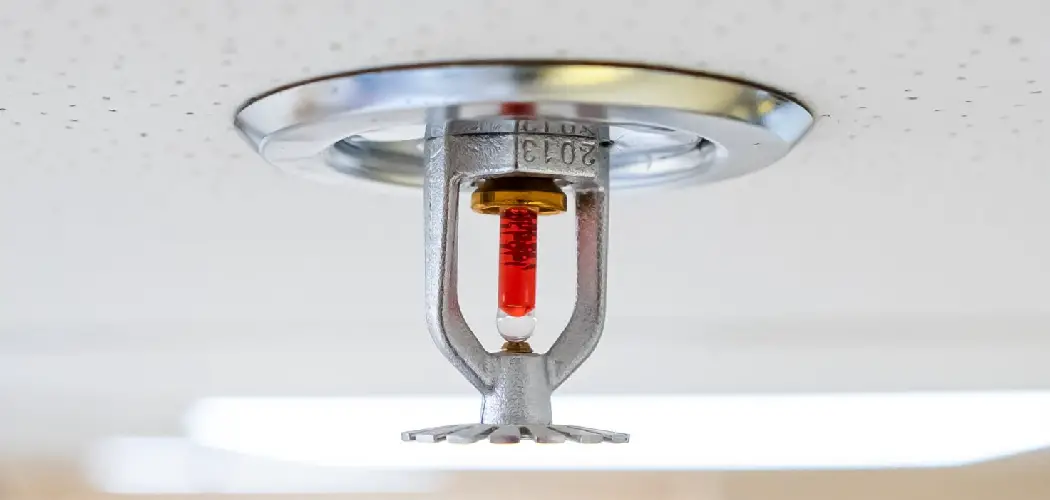Are you worried that hidden cameras are invading your privacy in fire sprinklers? Don’t worry, you’re not alone.

In an age where privacy concerns are paramount, the idea of hidden surveillance devices tucked away in unsuspecting places has become a growing worry. Fire sprinklers, seeming benign and essential for safety, can unfortunately be misused as a covert spot for hidden cameras. Identifying such intrusive devices is not only about safeguarding personal privacy but also about fostering a sense of security in spaces presumed to be private.
This guide aims to arm you with the knowledge and techniques necessary on how to detect hidden camera in fire sprinkler, ensuring your personal spaces remain just that—personal. Through easy-to-follow steps, we’ll explore the tools you’ll need, signs to watch for, and actions to take if you suspect the presence of a hidden camera.
What are the Benefits of Knowing How to Detect Hidden Camera in Fire Sprinkler?
- Protecting your Personal Privacy: As mentioned earlier, hidden cameras in fire sprinklers pose a threat to our privacy. By being able to identify and remove them, we can maintain our privacy and ensure that our personal spaces remain private.
- Avoiding Being Recorded Without Consent: Hidden cameras in fire sprinklers can be used for illicit purposes, such as recording someone without their knowledge or consent. By learning how to detect hidden cameras, you can prevent yourself from becoming a victim of such activities.
- Feeling More Secure in Your Personal Spaces:Knowing that you can detect hidden cameras can give you a sense of control and security in your home or private space. This can bring peace of mind and alleviate any worries about being watched or recorded without your knowledge.
- Learning Valuable Skills: Learning how to detect hidden cameras in fire sprinklers not only empowers you to protect your privacy but also teaches you valuable skills in surveillance detection and counter-surveillance techniques.
These are just a few of the potential benefits that come with knowing how to detect hidden cameras in fire sprinklers. Now, let’s dive into the specific steps you can take to identify and remove these devices.
What Will You Need?
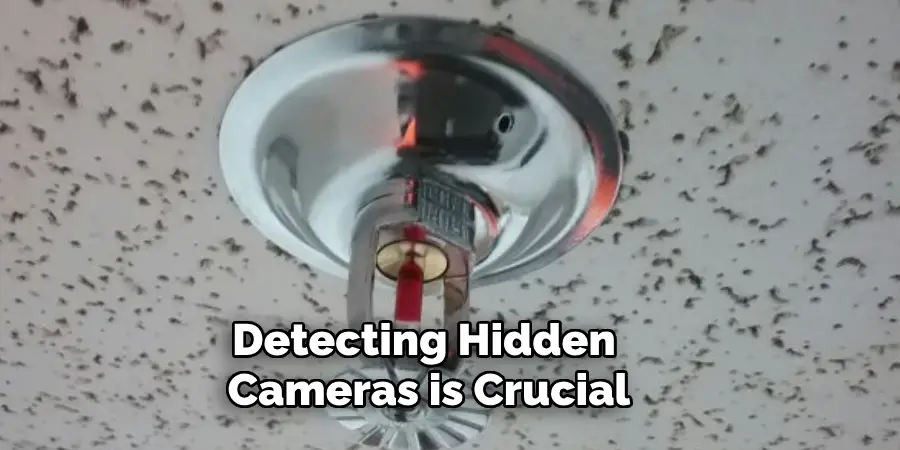
To begin the process of detecting hidden cameras in fire sprinklers, you’ll need some basic tools:
- Flashlight: A flashlight will come in handy to help you see into dark or hard-to-reach areas.
- Ladder: Depending on the height of your fire sprinklers, a ladder may be necessary to reach and inspect them closely.
- Screwdriver: You’ll need a screwdriver to remove the cover of the sprinkler head for a closer inspection.
- Magnifying glass: A magnifying glass can help you spot small or hidden cameras that may be difficult to see with the naked eye.
- Camera detector: While not necessary, a camera detector can make the process of finding hidden cameras easier and more efficient. These devices emit radio frequencies that can detect the presence of recording devices.
Once you have these tools, you’re ready to start the process of detecting hidden cameras.
10 Easy Steps on How to Detect Hidden Camera in Fire Sprinkler
Step 1. Prepare Your Tools:
Gather all the tools mentioned above before starting your inspection. Ensuring you have everything you need within reach will make the process smoother and more efficient. Additionally, make sure that your flashlight has fresh batteries and that your ladder is stable and safe to use.
Step 2. Turn Off the Sprinkler System:
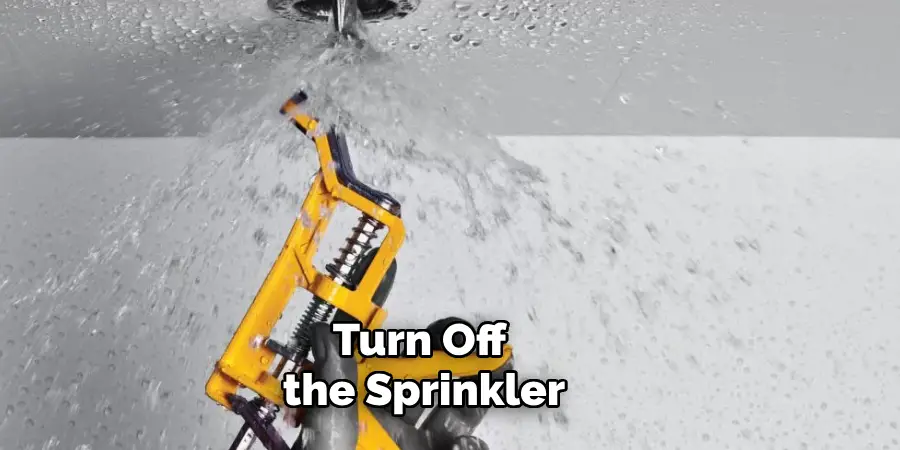
Before proceeding with the inspection of the fire sprinkler, it’s crucial to turn off the sprinkler system. This precautionary step is important for two reasons. First, it eliminates the risk of accidentally activating the sprinkler system and causing water damage to your property.
Second, it ensures that any hidden electronic devices, if present, are not damaged during the inspection, which could alert the person who placed them there. To turn off the system, locate the main control valve for your fire sprinkler system, which is typically found in the basement or a utility closet, and securely close it. If you’re not sure how to do this, consider consulting the system’s manual or calling a professional for guidance.
Step 3. Inspect the Fire Sprinkler for Any Unusual Signs:
Carefully examine each fire sprinkler in your space. Look for any unusual signs that might indicate tampering or the presence of a hidden camera. These signs can include, but are not limited to, small holes or gaps in the sprinkler head, unusual or additional wires, and components that don’t match the overall design or color of the sprinkler.
Use your flashlight to shine light on and around the sprinkler, paying close attention to reflections or glints that might suggest the lens of a camera. Remember, most hidden cameras are designed to be discreet, so take your time during this step to thoroughly inspect each sprinkler.
Step 4. Use a Magnifying Glass to Examine Details:
After an initial inspection, use a magnifying glass to examine each fire sprinkler more closely. This tool can be particularly helpful in identifying small, hard-to-see components that could be part of a hidden camera setup. Look for anything that seems out of place or does not have a clear function as part of the fire sprinkler system.
This could include miniature lenses, wires, or microphones. Pay special attention to any tiny holes or indentations on the fire sprinkler head, as these could be hiding spots for camera lenses.
Step 5. Remove the Cover of the Sprinkler Head (if Possible):
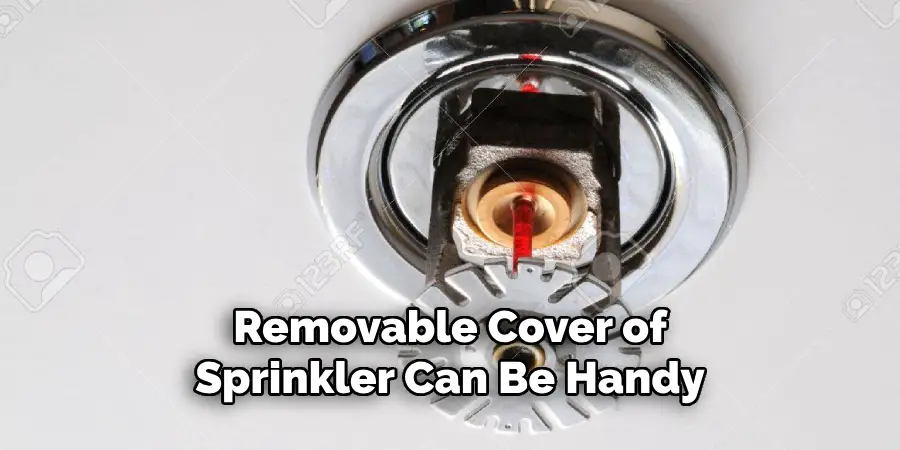
Some fire sprinkler heads may have a removable cover that can be taken off for a deeper inspection. If it’s safe and possible to do so, use your screwdriver to gently remove the cover of the sprinkler head. Be cautious and ensure you do not damage the sprinkler system in the process.
Once the cover is removed, carefully inspect the inside for any hidden devices. Look for electronic components that seem out of place within a fire sprinkler system. This could include small cameras, wires, or batteries. Reattach the cover securely after inspection, making sure not to interfere with the sprinkler’s functionality.
Step 6. Test the Area with a Camera Detector (if Available):
If you have a camera detector, now is the time to use it. Switch on the detector and slowly move it around each fire sprinkler area. Camera detectors work by identifying the radio frequencies or lens reflections emitted by electronic devices.
Listen for beeps or watch for signals on the detector that indicate the presence of a hidden camera. These devices can be particularly effective in finding hidden cameras that might be missed during a visual inspection. Remember that other electronic devices in your home can also emit radio frequencies, so it’s important to confirm any potential findings with a closer inspection.
Step 7. Look for Unfamiliar Wireless Signals:
In addition to physical inspections and the use of a camera detector, it’s also wise to scan for unfamiliar wireless signals in your environment. Many modern hidden cameras connect to a network to transmit video footage, making it possible to detect their presence by identifying suspicious Wi-Fi or Bluetooth signals.
You can use a smartphone or a computer to search for wireless networks or Bluetooth devices nearby. Be on the lookout for any network or device names that seem unusual or that you cannot identify as belonging to your household or business. If you come across such a signal, it could indicate the presence of a hidden camera connected to your network.
Step 8. Double-Check Common Hiding Spots:
Even after a thorough inspection, it’s a good practice to double-check common hiding spots within the inspected area. Hidden cameras can be ingeniously concealed in the most mundane objects or areas that might initially seem improbable.
Look again at places like adjacent light fixtures, ceiling tiles, smoke detectors, or any decorative items located near the fire sprinkler. These areas can provide covert placement for hidden cameras, taking advantage of the unsuspecting nature of their surroundings. A careful second look might reveal discrepancies or anomalies missed during the first pass of inspection.
Step 9. Consult a Professional if Necessary:
If, after completing the steps above, you still have concerns or if you’ve detected potential hidden cameras but are unsure how to proceed, it may be time to consult a professional. A security expert or a professional in surveillance detection can offer a more thorough inspection of your property using advanced tools and techniques.
They can also provide advice on enhancing your security measures to protect against future instances of surveillance. Remember, the goal is to ensure you feel safe and secure in your environment. Do not hesitate to seek professional assistance if you suspect the presence of hidden surveillance equipment.
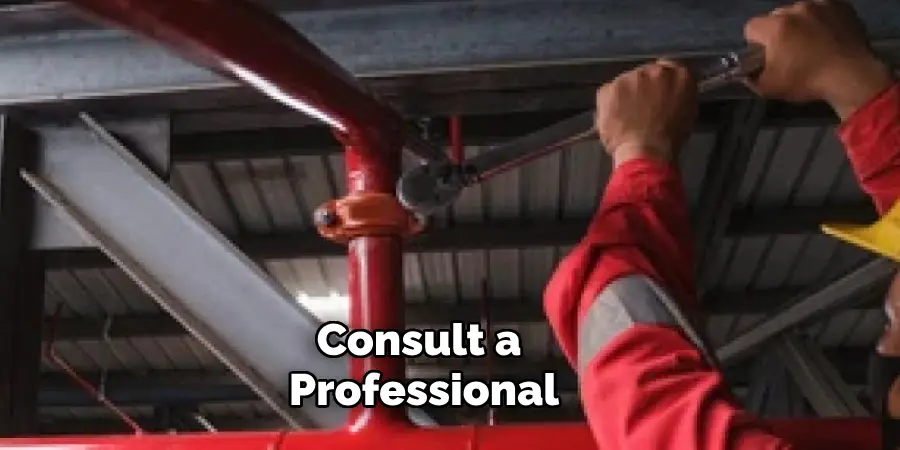
Step 10. Maintain Regular Inspections and Stay Informed:
Regularly inspecting your environment for new or relocated hidden cameras is essential for ongoing security. Surveillance technology is continually advancing, and methods for concealing cameras are becoming increasingly sophisticated. Staying informed about the latest in surveillance technology and common tactics used to conceal cameras can help you remain vigilant.
Regularly revisit areas of concern, especially after hosting visitors or having maintenance work done in your space. Additionally, it’s beneficial to stay updated with new tools and apps designed for detecting hidden cameras. By maintaining a routine of inspection and education, you can better safeguard your privacy and security against unwarranted surveillance.
By following these steps and remaining alert to potential hidden cameras, you can take proactive measures to protect your privacy.
5 Additional Tips and Tricks
- Use a Flashlight: Shine a flashlight at different angles onto the fire sprinkler. Hidden cameras often have reflective lenses, and by directing a beam of light, you might catch a glint indicating the presence of a camera lens.
- Inspect for Unusual Wires: Carefully examine the fire sprinkler and its surroundings for any wires that seem out of place or unnecessary. Hidden cameras may need to be powered by a wire, so if you find anything suspicious, it could be a sign of a hidden camera.
- Use your Phone’s Camera: Another way to detect hidden cameras in fire sprinklers is to use your phone’s camera function. Move your phone around the sprinkler and look for any reflections or unusual shapes that could indicate a camera lens.
- Look for Hidden Compartments: Some hidden cameras may be placed inside a hidden compartment within the fire sprinkler. Take a closer look at the sprinkler and see if any areas look unusual or out of place.
- Utilize a Camera Detector App: There are several apps available for both Android and iOS devices that claim to detect hidden cameras. These apps use the phone’s built-in magnetometer to scan for magnetic fields, which can sometimes indicate the presence of a hidden camera or recording device.
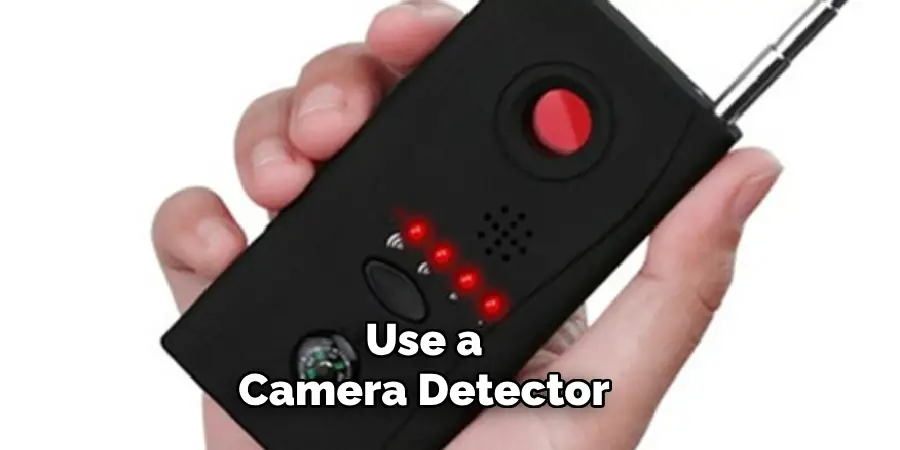
With these additional tips and tricks, you can further improve your chances of detecting hidden cameras in fire sprinklers.
5 Things You Should Avoid
- Avoid Ignoring Privacy Laws: Always be mindful of privacy laws and regulations in your area before attempting to detect or disable hidden cameras. Tampering with devices, especially in public or rented spaces, can lead to legal repercussions.
- Don’t Rely Solely on Physical Inspection: While physical checks are crucial, relying solely on them can result in oversights. Combining physical inspection with technology-based solutions offers a more thorough investigation.
- Avoid Damaging Fire Sprinkler Systems: In your quest to find hidden cameras, it’s vital to handle fire sprinkler systems delicately to prevent accidental activation or damage. These systems are critical for safety and require careful handling.
- Don’t Overlook the Power of Simple Observation: Before jumping into complex detection methods, don’t underestimate the effectiveness of simply observing and noting anything unusual about the fire sprinkler’s appearance and location.
- Avoid Using Unverified Camera Detection Apps: While many apps claim to detect hidden cameras, using unverified or unreputable applications can further risk your privacy. It’s essential to use apps with positive reviews and credible recommendations.
By avoiding these potential pitfalls, you can ensure a safe and responsible approach to detecting hidden cameras in fire sprinklers.
What is Inside a Fire Sprinkler?
A fire sprinkler is a device designed to automatically detect and extinguish fires in buildings. It consists of several components, including a water supply, control valve, alarm system, and the actual sprinkler head.
The water supply for fire sprinklers is typically sourced from either a municipal water line or an on-site storage tank. The water is pressurized using pumps and stored in pipes that run throughout the building.
The control valve, also known as a fire department connection, is responsible for controlling the flow of water to the sprinkler system. In case of a fire, the control valve ensures that water is automatically released into the pipes and, thus, onto the fire.
The alarm system is another critical component of a fire sprinkler. It consists of a flow switch that activates an alarm when water starts flowing through the system, indicating the presence of a fire.
Lastly, most people are familiar with the sprinkler head. It is a small device located at the end of each pipe and contains a heat-sensitive element that triggers the release of water when exposed to high temperatures. The sprinkler head sprays water in a specific pattern, extinguishing the fire or containing it until help arrives.
Knowing what is inside a fire sprinkler can also help you detect any tampering or modifications that may have been made to hide a hidden camera inside.
Do Sprinklers Have Red Light?
Fire sprinklers do not have a red light specifically for detecting hidden cameras. However, as mentioned previously, using a flashlight at different angles can help detect a glint or reflection from camera lenses.
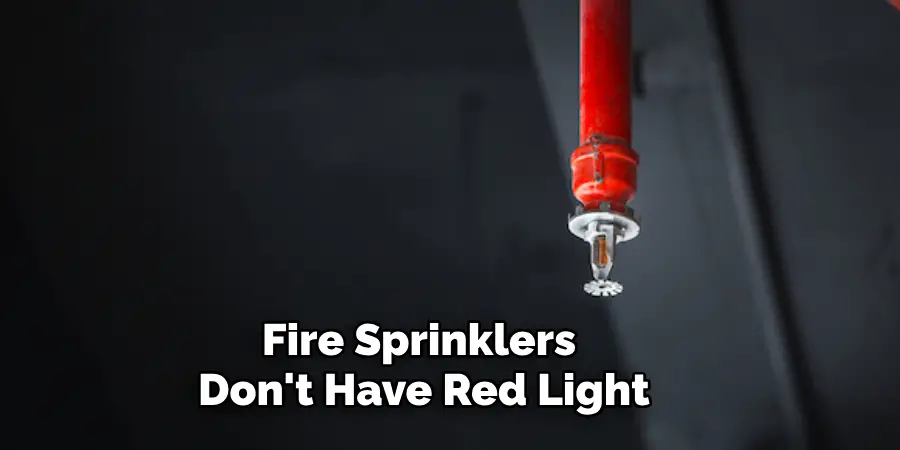
Additionally, some fire sprinkler systems may have indicator lights to show if the sprinklers are active or working properly, but these are not meant to detect hidden cameras. It is crucial to follow the recommended methods and tips for detecting hidden cameras rather than relying on any potential indicator lights on fire sprinkler systems.
Overall, while fire sprinklers may not have a specific red light for this purpose, other techniques can still effectively help detect hidden cameras. So, if you suspect hidden cameras are present, be sure to use the suggested methods and exercise caution when handling fire sprinkler systems.
Do Sprinklers Have Sensors?
Yes, fire sprinklers do have sensors. Sprinkler systems typically use either heat or smoke detectors as the primary sensor to detect a potential fire. When these detectors sense an increase in temperature or the presence of smoke, they trigger the sprinkler system to activate and release water onto the fire.
It is important to note that these sensors are specifically designed for detecting fires, not hidden cameras. While the sensors may detect a fire caused by overheating from a hidden camera, they will not directly detect the presence of the camera itself. This is why it’s important to use other methods for detecting hidden cameras in fire sprinklers.
Overall, while sprinklers do have sensors, they are not intended for detecting hidden cameras and should not be solely relied upon for this purpose. By combining different detection techniques and being cautious when handling fire sprinkler systems, you can effectively detect and eliminate hidden cameras in your surroundings.

Conclusion
In conclusion, how to detect hidden camera in fire sprinkler requires a combination of observation, technological assistance, and awareness of legal and safety considerations. Employing diverse methods such as using a flashlight to catch reflective glints, inspecting for unusual wires, utilizing smartphone cameras, looking for hidden compartments, and applying reliable camera detector apps can significantly enhance your ability to uncover hidden devices.
At the same time, it’s essential to avoid actions that could violate privacy laws, damage fire safety equipment, or compromise your security through unreliable detection apps. Although fire sprinkler systems themselves do not include features specifically for detecting hidden cameras, by being vigilant and employing a variety of detection strategies, you can effectively safeguard your privacy and security.
Always remember, the key to successfully detecting hidden cameras lies in a careful and considered approach that respects legal boundaries and prioritizes safety.

